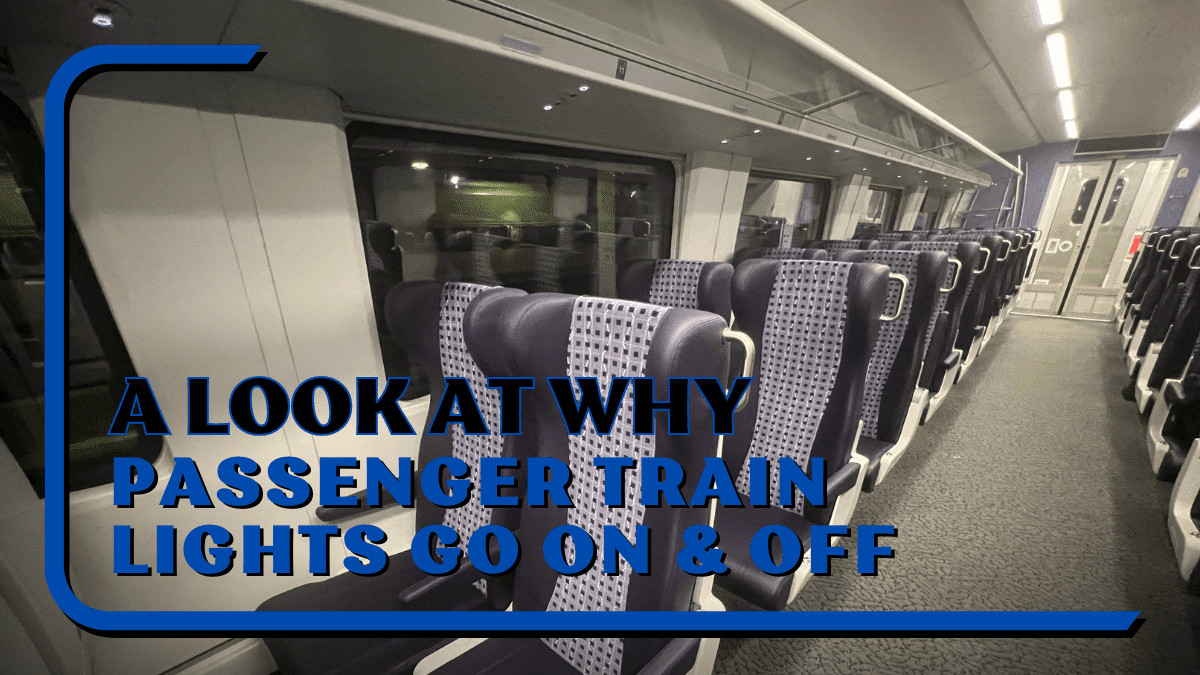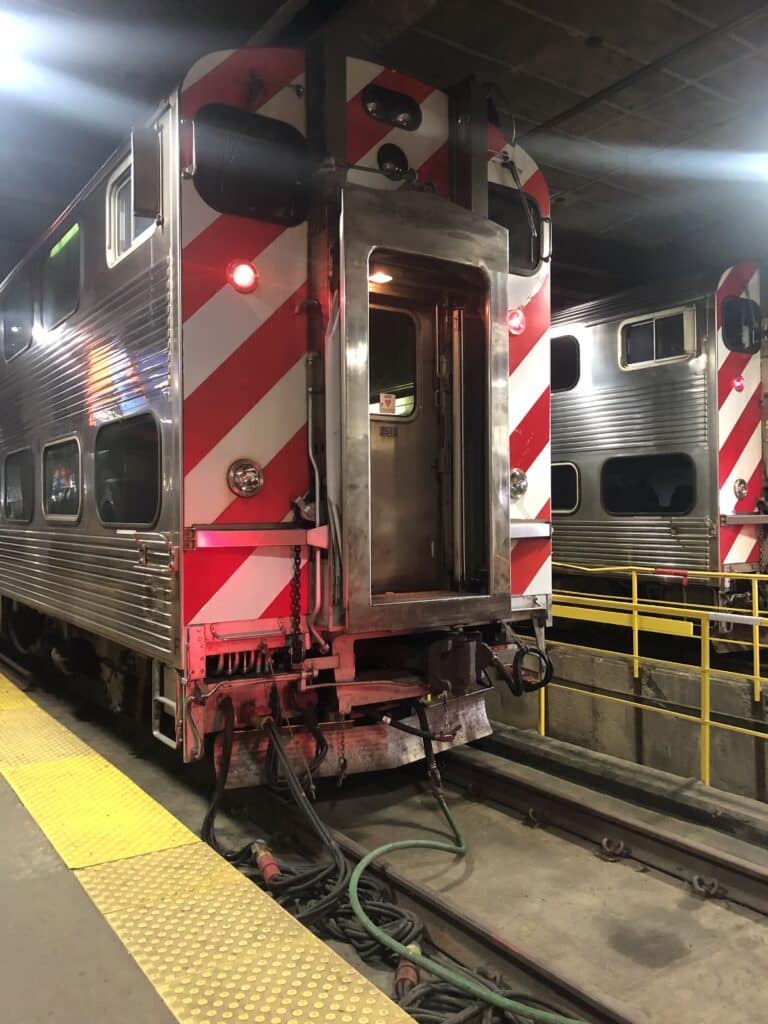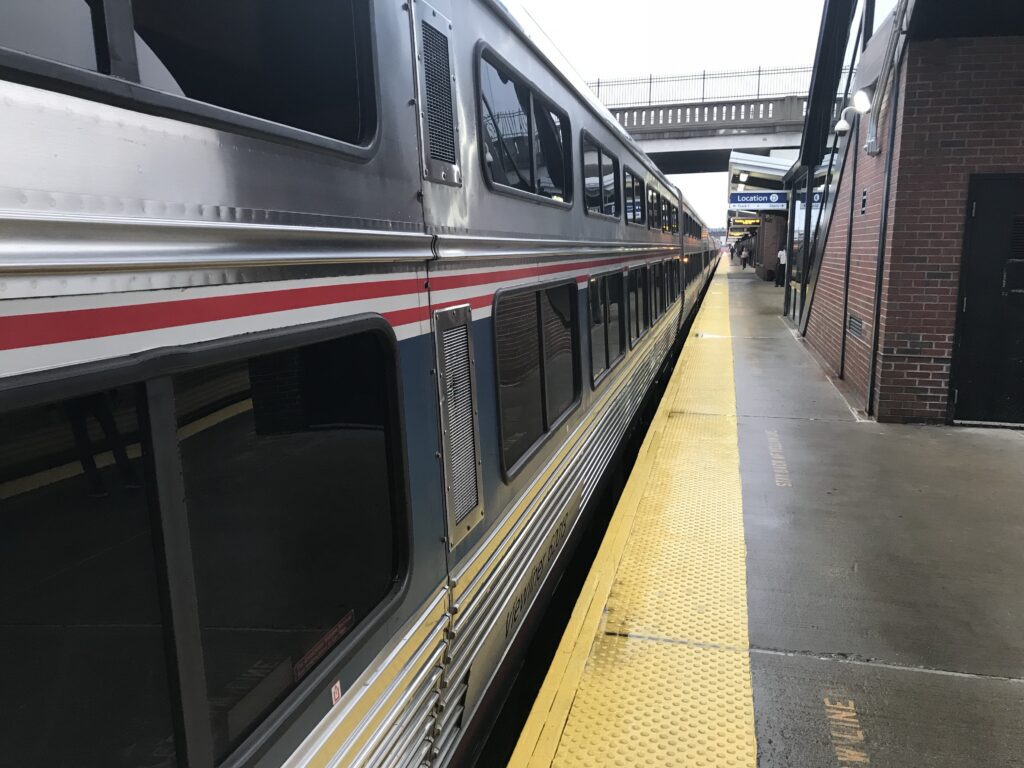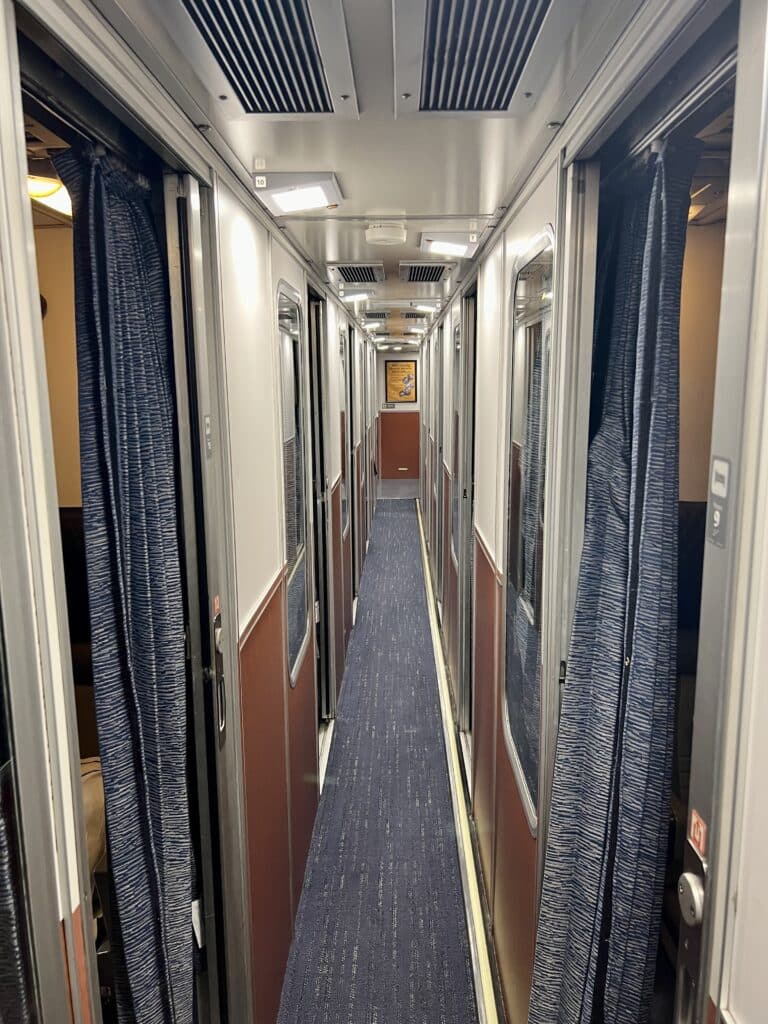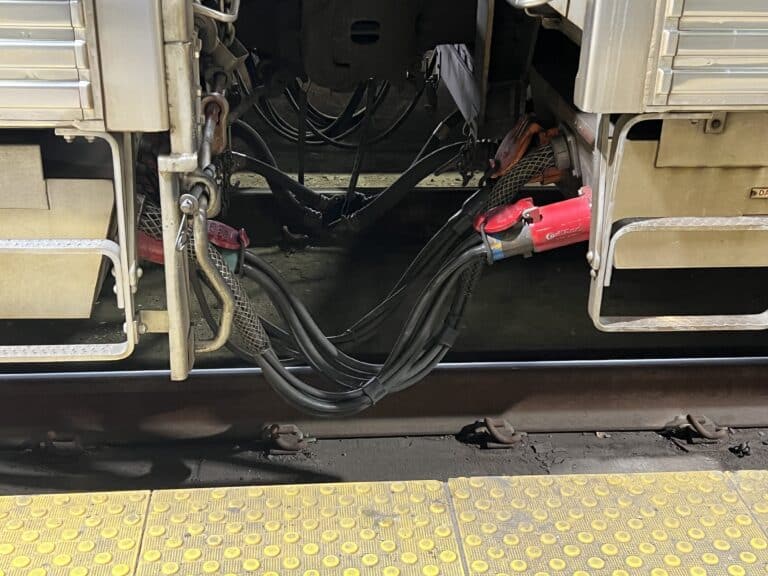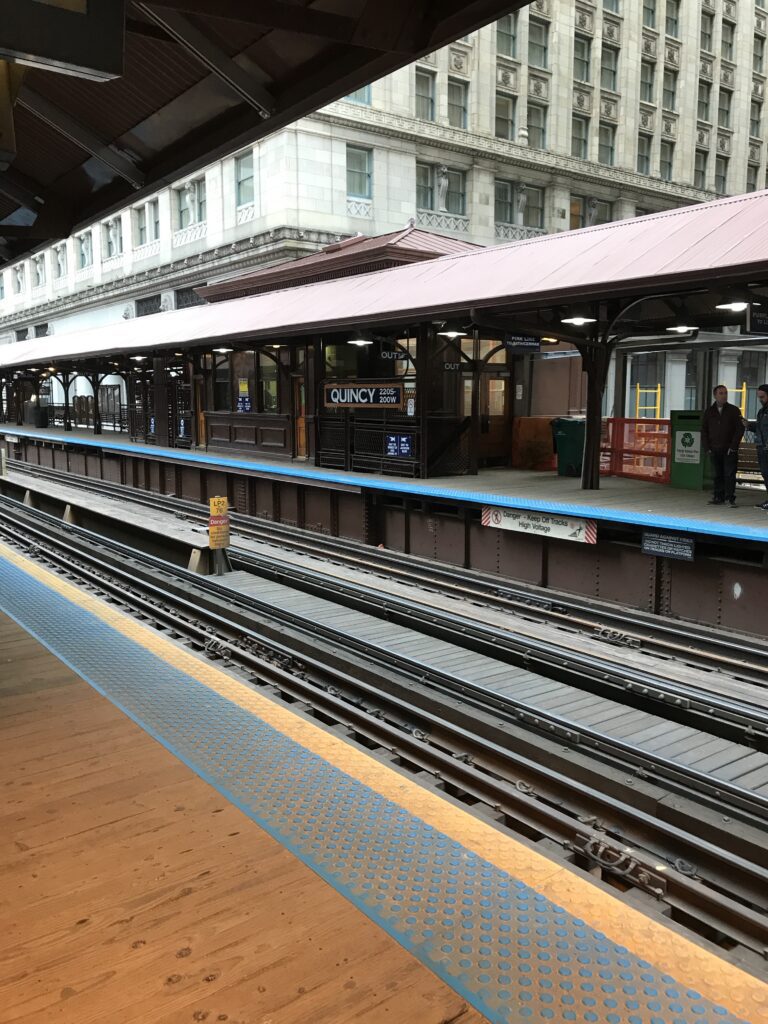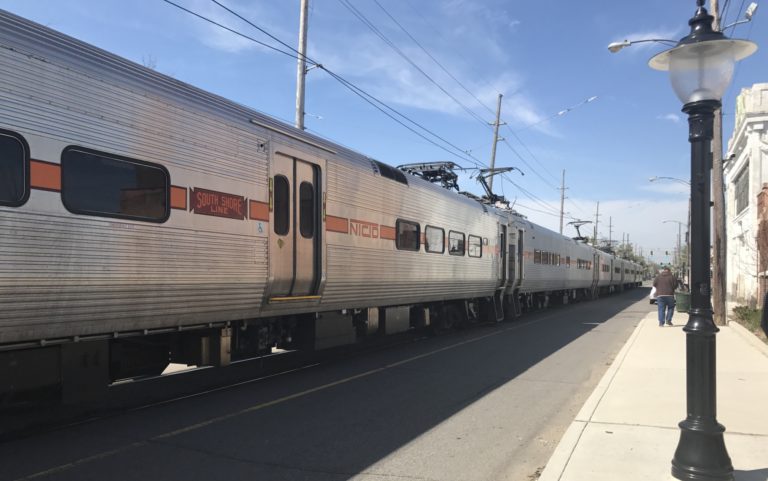Have you ever noticed the lights flickering or briefly going out while traveling by train, especially at station stops or just before departure? This action is a standard part of train travel and typically poses no concern. Understanding why passenger train lights malfunction can help you feel more prepared and at ease on your next journey, whether riding Amtrak in the USA, VIA Rail in Canada, or another passenger train.
Efficiency: one reason why passenger train lights go off
If you are at a station, efficiency is the main reason the lights go on and off.
Passenger locomotives produce head-end power (HEP), also known as hotel power—the power generated for lighting, heating, air conditioning systems, and electrical outlets.
HEP is excellent for traveling down the rails, but it is less efficient during long station stops when other power sources are available.
Most stations where trains sit for a while have “house power,” which allows staff to plug the train in and use the station’s power instead of HEP.
This process saves railroads money by reducing fuel consumption and minimizing equipment wear, as the trains no longer need to operate the HEP generator.
When trains switch from “house” to HEP or vice versa, the lights will go off as they are unplugged from one source and plugged into another.
Each car is equipped with a battery backup system to operate emergency lights and the PA system. This system often engages for a few moments during the power swap.
If you are on the train during this time, certain services, such as toilets and food cars, may not be operational.
Equipment changes can cause passenger train lights to go off
Occasionally, the train may not have power at stops.
Equipment swap
If you have ever traveled through Washington, D.C., on a long-distance train, you have likely experienced a period when the power was out.
During this time, there will be no power on the train for the safety of the employees.
Sometimes, the Cardinal hauls extra equipment between Chicago and the Beechgrove repair center. While Amtrak adds or subtracts equipment, the lights go off until the work is finished.
Combing trains
A few trains separate or come together en route, and like during equipment swaps, the train will not have power.
Passenger train lights go off during some safety checks
Sometimes, trains must undergo safety checks; during these tests, the engineers may need to shut off the power to the passenger cars temporarily.
Squeeze out a little more power!
Locomotive engineers sometimes turn off the HEP if the train needs more power. The HEP can reduce the power to the traction motors that power the train.
If engineers need to do this, it is for a very short time.
Good night!
If it’s later at night and the lights go off, and they don’t come back on, it could be because it’s nighttime.
Amtrak will turn the lights off in coach cars at night, allowing you to sleep.
There are nightlights at night. Do not try to tamper with them; yes, I have seen this. You may want to find a comfortable eye mask if you need complete darkness to sleep while traveling.
I got unplugged!
Passenger cars transfer power from one car to the following via cables; sometimes, these cables come loose during travel, which can cause a loss of electricity. Once the train stops, the crew can reconnect the line, and everything will be back to normal. If this happens, don’t worry; all the safety equipment still works.
Passenger train lights on electric trains.
Today, your adventure could have a diesel or electric locomotive; electric train locomotives predate their diesel counterparts.
Electric trains obtain their power in one of two ways: either through overhead wires or a third rail.
How electric trains give you power
Electric trains do not have the same HEP as diesel trains; instead, they have a converter that reduces the voltage to house power.
Block issues
A “dead block” occurs when the power source, such as the overhead line or third rail, is disconnected from electricity.
Regardless of where an electric train gets its power, it may experience a dead block on the tracks.
Railroads divide power lines into blocks, either wires or rails, allowing them to work on one section without shutting down the whole line.
Railroads may intentionally cause a dead block for maintenance; in this case, they will not send trains down those rails. Other reasons can be acts of god or accidents; in this case, the train could run into a dead block if not warned immediately. But this would rarely happen.
Third-rail train power issues
An example of the third rail is Chicago’s CTA Subway and Elevated Lines. Each car contacts the third rail to get power for that car.
A train may lose power when going through a switch or crossing another track because the car loses contact with the power rail.
The power will return as soon as that car passes through that area.
Overhead Wires
Other electric trains use overhead wires; examples include the South Shore Line, Amtrak’s Northeast Corridor, and streetcars in San Francisco.
Power loss on these trains can happen if the train loses contact with the overhead power.
Wrap-up on passenger train lights
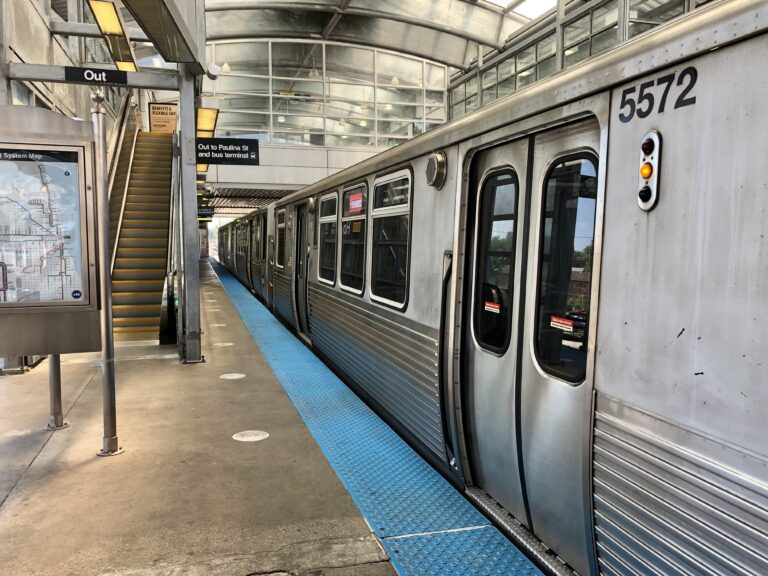
I hope this answers your question about why interior lights on passenger trains go on and off.
On one journey to Chicago aboard a Metra train, the “hotel power” went off because a cable became loose and disconnected.
Since we were not in danger, they waited until we arrived at Chicago Union Station to fix the problem, since we were close.
It is fun to hear first-time train travelers gasp when it happens. Now you know that you can share this info with your travel companions.
Safe travels!
Kev
For more info
Love Train Travel?
🚆 Love Train Travel? Stay Connected in Two Easy Ways!
📱 Follow Me on Social Media – Get real-time updates, travel tips, and stories from the rails.
✉️ Join My Free Newsletter – Be the first to know about Amtrak news, insider tips, and exciting travel opportunities.
When you sign up for the newsletter, you’ll also receive a free Quick Reference Guide to Amtrak Long-Distance Trains—packed with details on train equipment, dining options, and more.
➡️ Sign up today and start planning smarter, smoother train adventures!
❤️ Want to support my work? Every bit of help keeps Travels with Kev rolling—check out my Support Page or join me on Patreon!

